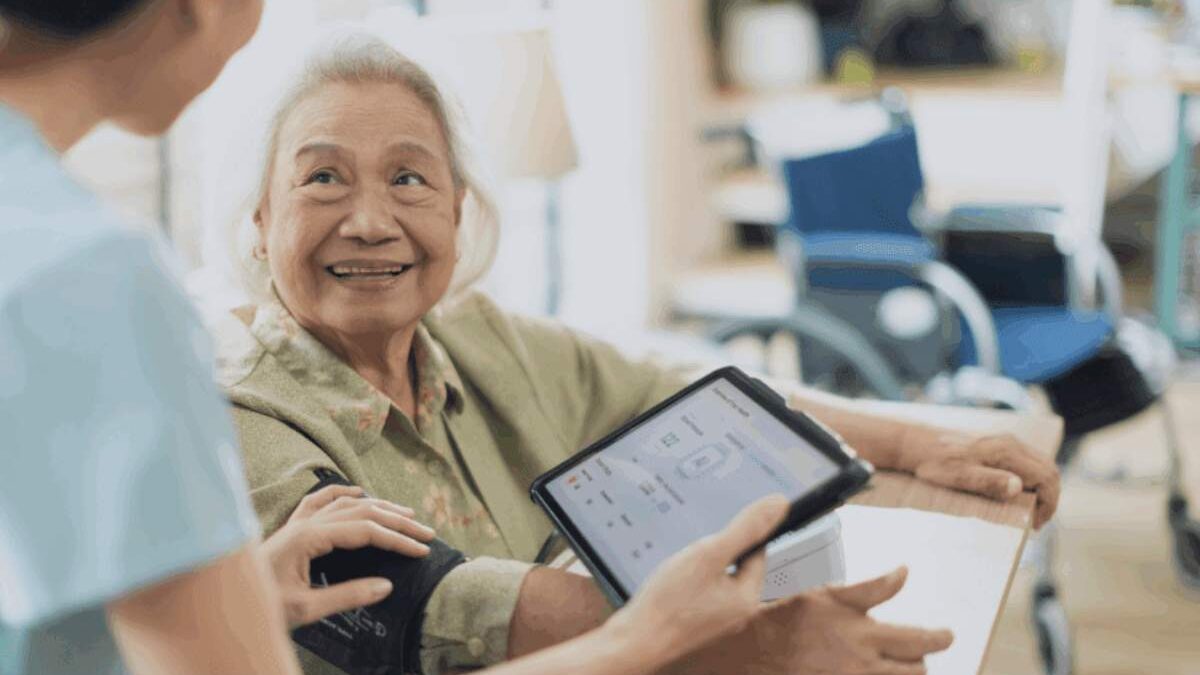The problem isn’t the paperwork. it’s the paper.
Here’s the scene: A nurse finishes a visit, rushes to her car, scribbles notes while balancing a clipboard on the steering wheel, then heads to her next appointment—already behind schedule.
Meanwhile, back at the office? The care team is flying blind until those notes get dropped off. Documentation is delayed. Care gaps widen. And compliance? Hanging on by a thread.
Welcome to the “old normal” of home health.
Now imagine this instead: real-time updates, mobile check-ins, instant access to care plans, digital documentation before the car’s even shifted out of park.
That’s what mobile-enabled home health care software delivers. And for field clinicians, it’s a game-changer.
Table of Contents
Clinicians Aren’t Desk Workers—So Why Give Them Desk-Only Tools?
In home health, the frontline is the job.
Whether it’s skilled nursing, wound care, therapy, or chronic disease management, clinicians are constantly on the move.
Mobile-enabled software meets them where they are—literally.
It puts everything they need into one device they already carry: their phone or tablet.
That means fewer delays, fewer mistakes, and a whole lot less back-and-forth with the office.
What Can Clinicians Actually Do With Mobile Home Health Care Software?
A lot more than you think. Let’s break it down:
– Clock in and out with GPS validation — so time and location tracking is accurate, and EVV compliance is covered.
– Access the latest care plans and visit instructions — no guessing, no outdated info, no missed steps.
– Log vitals, wound photos, medication updates — all in real time, with no need to re-enter later.
– Capture client signatures on-site — instantly confirm completed visits and tasks.
– Securely message care coordinators — no more “I left a voicemail” black holes.
– Work offline — because not every home has Wi-Fi, and LTE doesn’t always cooperate.
Real-Time Visibility = Faster, Smarter Decisions
When clinicians document in real time, supervisors can spot issues faster.
Missed meds? Worsening symptoms? A new fall risk?
It’s flagged immediately—not days later when someone finally transcribes notes into the EMR.
That kind of responsiveness can prevent hospital readmissions, catch compliance risks early, and keep care plans aligned with actual patient needs.
In other words: better outcomes, backed by better data.
Fewer Clicks. Less Friction. More Care.
Let’s be clear: clinicians didn’t go into home health to become data entry robots.
The best software isn’t just mobile—it’s intuitive.
AlayaCare’s interface, for example, is designed for speed and simplicity. Think:
- Auto-filled fields
- Tap-to-complete tasks
- Voice-to-text options for notes
- Visual care plan summaries
The result? More time with patients, less time wrestling with clunky tech.
Reduced Burnout Starts in the App
Documentation after hours is one of the top drivers of burnout in home health.
Mobile tools that streamline this process—right at the point of care—help clinicians reclaim their evenings, reduce stress, and feel more in control.
And when field staff feel supported, they stick around longer.
Retention goes up. Continuity improves. Clients notice. Everyone wins.
Compliance Isn’t an Afterthought—It’s Built In
Mobile-enabled platforms also enforce documentation standards as care is delivered.
Missed a required task? Incomplete chart? Software prompts catch it before the visit is finalized.
No more chasing down clinicians for missing signatures. No more retroactive scrambling during audits.
It’s compliance made simple—and automatic.
In the Field, Every Minute Counts. Give Your Team the Tools to Make Them Matter.
Mobile isn’t optional in modern home health—it’s essential.
If you want empowered staff, improved outcomes, and real-time oversight, you need mobile-first home health care software that’s built for today’s reality.

